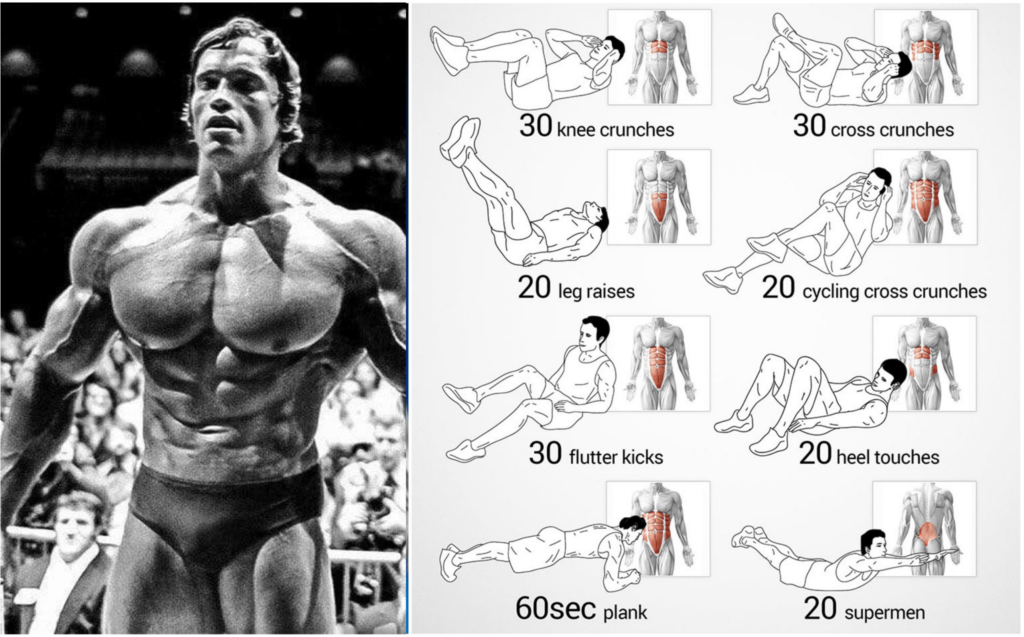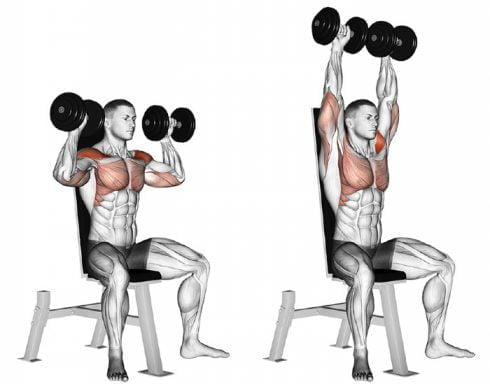Introduction
Hello Guys, Thanks for visiting our website. Today we will discuss the topic “Benefits of Copenhagen Plank for Lower Muscles” Moreover, we will also discuss “How Does Copenhagen Plank Work on Abs, Obliques, and Back?” It will be a deep conversation about Copenhagen Plank, So let’s dig into the topic and read in brief.
The Copenhagen Plank is a type of exercise that targets the core muscles of the body, specifically the obliques, abs, and lower back. It is a variation of the traditional plank exercise and involves holding a plank position while lifting one leg and placing it on an elevated surface, such as a bench or box. This added movement increases the challenge to the core muscles and improves strength and stability.
The Copenhagen Plank is named after the city of Copenhagen in Denmark, where it was popularized by a physical therapist, Dr. Eric Kristensen. Exercise has gained popularity in recent years as a highly effective way to strengthen the core and improve overall athletic performance.
The Copenhagen Plank can be modified to increase or decrease the intensity by adjusting the height of the elevated surface or the duration of the hold. However, it is important to maintain proper form and engage the core muscles throughout the exercise to avoid injury.
How to Do Copenhagen Plank?

Here are the steps to perform the Copenhagen Plank exercise:
- Begin by lying on one side of your body on the floor. Place your elbow directly under your shoulder and prop yourself up so that your forearm is perpendicular to your body. Your feet should be stacked on top of each other.
- Engage your core and lift your hips off the ground, creating a straight line from your head to your feet. Make sure to keep your elbow and forearm firmly planted on the ground.
- Lift your top leg and place your foot on an elevated surface, such as a bench, box, or step. Keep your knee bent at a 90-degree angle.
- Hold this position for a specific amount of time, usually between 30 seconds to 1 minute. Make sure to keep your hips level and your core engaged.
- Lower your leg back down and repeat the exercise on the other side.
When performing the Copenhagen Plank, it is essential to maintain proper form to avoid injury. Make sure to engage your core and keep your hips level throughout the exercise. If you are new to this exercise, start with a lower platform and gradually increase the height as you become stronger.
Copenhagen Plank for Lower Muscles
The Copenhagen Plank is a challenging exercise that can help to strengthen the muscles of the lower body, particularly the hip adductors, and abductors. These muscles are responsible for moving the legs inwards and outwards and play an important role in stabilizing the hips and pelvis.
During the Copenhagen Plank, the hip abductors and adductors are engaged to keep the lifted leg stable and prevent it from dropping or rotating. This movement also engages the gluteus medius and minimus muscles, which are located on the side of the hip and are responsible for abducting and stabilizing the hip joint.
By strengthening these muscles, the Copenhagen Plank can help to improve balance, stability, and athletic performance, as well as prevent injury to the hips and lower body. This exercise can also help to improve overall core strength and stability, which is important for maintaining proper form and preventing injury during other exercises and activities.
To get the most out of the Copenhagen Plank for lower muscles, it is important to maintain proper form and engage the core muscles throughout the exercise. Avoid letting your hips sag or your lower back round, as this can place unnecessary stress on the lower body muscles and increase the risk of injury.
Overall, the Copenhagen Plank is a challenging exercise that can help to improve lower body strength, stability, and balance. By incorporating this exercise into your workout routine, you can target multiple areas of the body and achieve a more well-rounded workout.
How Does Copenhagen Plank Work on Abs?
The Copenhagen Plank is an effective exercise for working the abs, specifically the rectus abdominis and the obliques. The exercise involves holding a plank position while lifting one leg and placing it on an elevated surface, which adds an additional challenge to the core muscles.
The rectus abdominis is the primary muscle targeted by the Copenhagen Plank. This muscle is located in the front of the abdomen and is responsible for flexing the spine, as well as helping to stabilize the pelvis and lower back. During the Copenhagen Plank, the rectus abdominis works to keep the body in a straight line and prevent the hips from sagging or tilting.
The obliques, which are located on the sides of the abdomen, are also engaged during the Copenhagen Plank. These muscles work to rotate the trunk and stabilize the pelvis during movement. By lifting one leg and placing it on an elevated surface, the obliques are forced to work harder to maintain stability and prevent the body from rotating.
To get the most out of the Copenhagen Plank for the abs, it is important to maintain proper form throughout the exercise. Make sure to engage the core muscles and keep the hips level. It is also essential to breathe deeply and evenly throughout the exercise to help maintain proper form and prevent muscle fatigue.
How Does Copenhagen Plank Work on Obliques?
The Copenhagen Plank is an excellent exercise for working the oblique muscles, which are located on the sides of the abdomen. These muscles are responsible for rotating the trunk and bending the spine laterally, and they play a crucial role in maintaining stability and balance during movement.
During the Copenhagen Plank, the obliques are engaged to a greater extent than in traditional plank exercises because of the added challenge of lifting one leg and placing it on an elevated surface. This movement requires increased stability and balance, which is provided by the obliques.
To increase the intensity of the exercise, you can also add a rotation by reaching your top arm under your body and towards the opposite side. This movement further engages the obliques and adds an extra challenge to the exercise.
Overall, the Copenhagen Plank is an effective exercise for working the oblique muscles, improving stability and balance, and building overall core strength.
How Does Copenhagen Plank Work on Back?
The Copenhagen Plank is a challenging exercise that can help to strengthen the muscles of the lower back, which play an important role in supporting the spine and maintaining proper posture.
During the Copenhagen Plank, the muscles of the lower back are engaged to help stabilize the spine and maintain proper form. The erector spinae muscles, which run along the length of the spine and are responsible for extending the spine, are particularly active during this exercise. These muscles work to keep the spine in a neutral position and prevent it from arching or rounding during the movement.
In addition to the erector spinae muscles, the Copenhagen Plank also engages the muscles of the upper and middle back. These muscles work to help stabilize the scapulae (shoulder blades) and maintain proper posture during the exercise.
To get the most out of the Copenhagen Plank for the back muscles, it is important to maintain proper form throughout the exercise. Focus on engaging your core and keeping your spine in a neutral position. Avoid letting your hips sag or your lower back round, as this can place unnecessary stress on the muscles of the lower back.
Overall, the Copenhagen Plank is a challenging exercise that can help to strengthen the muscles of the back, improve posture, and prevent back pain. However, it is important to start slowly and gradually increase the difficulty of the exercise to avoid injury.
Copenhagen Plank With Knee Drive
The Copenhagen Plank with Knee Drive is a variation of the traditional Copenhagen Plank that adds an extra challenge and works the core muscles, as well as the hip flexors and obliques. Here’s how to perform this exercise:
- Begin in a traditional Copenhagen Plank position, with your elbow and forearm on the ground and your body in a straight line.
- Lift your top leg and place it on an elevated surface, such as a bench or box, with your foot pointing straight ahead.
- Slowly lift your bottom leg off the ground and bring your knee towards your chest, keeping your foot flexed.
- Pause at the top of the movement, then slowly lower your leg back down to the starting position.
- Repeat the movement for a set number of reps or for a specific amount of time, then switch sides and repeat with the opposite leg.
During the Copenhagen Plank with Knee Drive, focus on maintaining proper form and engaging your core muscles to keep your body stable. The knee drive movement adds an extra challenge to the exercise by engaging the hip flexors and obliques, which are responsible for lifting the leg and rotating the torso.
To increase the intensity of the exercise, you can also add a twist by reaching your top arm under your body and towards the opposite side as you perform the knee drive. This movement further engages the obliques and adds an extra challenge to the exercise.
Overall, the Copenhagen Plank with Knee Drive is a challenging exercise that can help to improve core strength, stability, and balance, as well as build hip flexor and oblique strength.
Copenhagen Plank vs Side Plank
The Copenhagen Plank and Side Plank are both effective exercises for strengthening the core muscles, but they target slightly different areas of the body and offer unique benefits.
The Side Plank primarily targets the oblique muscles, which are located on the sides of the abdomen and are responsible for rotating the trunk and bending the spine laterally. The exercise involves balancing on one arm and the side of one foot, with the other arm extended upwards. This movement requires significant stability and strength in the oblique muscles, making it an effective exercise for toning and strengthening this area.
The Copenhagen Plank, on the other hand, also targets the oblique muscles but adds an extra challenge by lifting one leg and placing it on an elevated surface. This movement requires greater stability and balance, and also engages the hip flexors and lower back muscles to a greater extent than the Side Plank. Additionally, the Copenhagen Plank can be performed on both sides of the body, providing a more balanced workout.
Both exercises can be modified to increase or decrease the difficulty level, making them suitable for people of all fitness levels. However, it is important to maintain proper form throughout the exercise to avoid injury and get the most out of the workout.
In summary, both the Copenhagen Plank and Side Plank are effective exercises for strengthening the core muscles, with each offering unique benefits. Incorporating both exercises into your workout routine can help to target multiple areas of the body and improve overall core strength and stability.

Good day, and welcome to Fitthour. My name is Shubham Vijay, and I am a certified personal trainer and nutrition coach with 6 years of experience in the fitness industry. At Fitthour, we specialize in types of training, such as strength training, cardio, or HIIT, and our mission is to help clients achieve their fitness goals and improve their overall health.




